C type Continuous THIN Freehand. A full cross section displays the whole view whereas a local cross section shows a portion of the model within a closed boundary cross-sectioned but not outside the closed boundary.
D type Continuous THIN Zig-Zag.
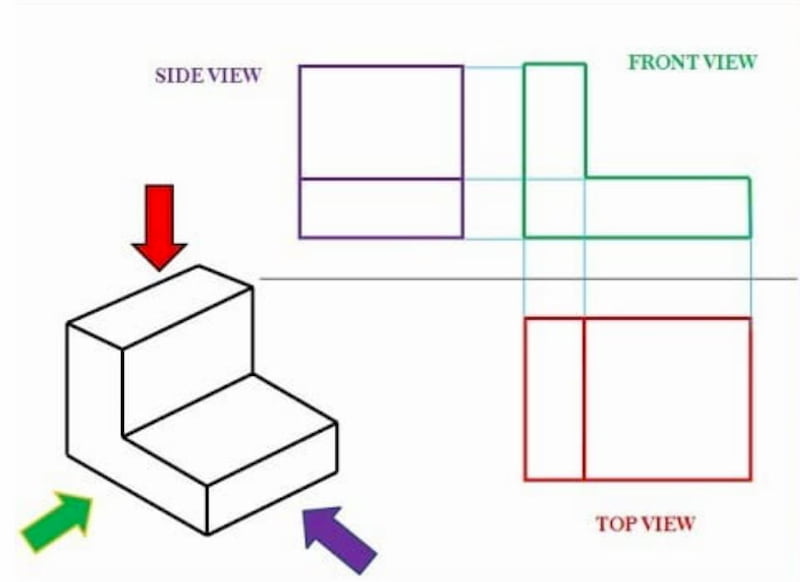
. When specific features of an object that need highlighting are not located. A full section is the most widely-used sectional view. B type Continuous THIN.
The lines are thin and are usually drawn at a 45-degree angle to the major outline of the object. Half sections or views. K half section the view obtained when the cutting plane goes half way across the object to the centre line.
However the terms are becoming an anachronism since most copies of engineering drawings that were made using a chemical-printing process that yielded graphics on blue-coloured paper. Revolving sections or view. Removed section detailed section 7.
Put into a drawing to show an area not normally shown. Following are the different types of lines used in engineering drawing. The view is made by passing the straight cutting plane completely through the part.
Aligned Section Revolved Sections Used to show a small portion of a drawing. Broken crosshatching shows where cutting plane line intersections material each material has its own crosshatching cutting plane line shows where the imaginery knife cuts thru the part line is always parallel to a line of rotation shows which cutting plane line goes to the section. A revolving view is effective for elongated objects or.
These lines are called section lining or cross-hatching. You can create a cross section in Part and Assembly modes and show it in a drawing or you can add it to a view in drawing mode while you are creating it. There are a number of different types of sectional views that can be drawn.
All parts and details are rotated into the section view. A plan drawing is a drawing on a horizontal plane showing a view from above. Show a cross-section of an area turned 90 degrees or perpendicular to the object.
Revolved section aligned section 6. Used in many cases to avoid having to Dr. Types of section views 1.
What are the different types of section views in engineering drawing. In this view the cutting plane is assumed to bend at a right angle and cuts through only half of the. H type Chain THIN and THICK.
A few of the more common ones are. Full section 2. Gaskets seals Do not show hidden detail in sectional view.
Broken out sections or broken views. Types Of Sectioning In Technical Drawing In comparison to plan types which are distinguished by their spatial consequences section types are usually identified by the scale of their cut. Figure 19 - Full and sectioned isometric views.
How many types of drawings are there in drawing. You have learned that when making a multiview sketch hidden edges and surfaces are usually shown with hidden dash lines. 88 Plan B Revolved sections.
Full Section Cutting plane passes fully through object. Half sections are commonly used to show both the internal and outside view of symmetrical objects. Half Section expose interior of half of an object retains exterior of.
The view is made by passing the bended cutting plane completely through the part. E type Dashes THICK. Full sections half sections broken sections rotated or revolved sections removed sections offset sections and assembly sections.
The diagonal lines on the section drawing are used to indicate the area that has been theoretically cut. Offset sections or views. There are a number of different types of sectional views that can be drawn.
Features that cannot be seen by hidden detail Cutting plane removes part section is what is left Cross hatching ois at 45 equispaced Centrelines often used for cutting planes Very thin sections not hatched eg. Engineering drawings are often referred to as Blueprints. Sectional views in engineering technical drawings.
Types of Sectional Views Full Section. A type Continuos Thick. F type Dashes THIN.
A short series of lectures on Engineering Drawing as Part of ENGG1960 By Paul Briozzo. Engineering drawing views engineering drawing types INTRODUCTION. Figure 20 - Front view and half section.
What are the different types of section in engineering drawing. This type of drawing avoids the necessity of introducing dotted lines for the holes and the recess. A few of the more common ones are.
Last Updated on Sat 23 Oct 2021 Engineering Drawing Symmetrical parts may be drawn half in section and half in outside view. G type Chain Thin. Ribs and spokes can be left un-lined for better clarity in the section view.
Sectional views in engineering technical drawings Half Sectional views. Dimensioning to dotted lines is not a recommended practice. Plan Section and Elevation are different types of drawings used by architects to graphically represent a building design and construction.
Full sections half sections broken sections rotated. Types of Views in Engineering Drawing. Types of sections Full Section Half Section Offset Section Dr.
An Elevation drawing is drawn on a vertical plane showing a vertical depiction.
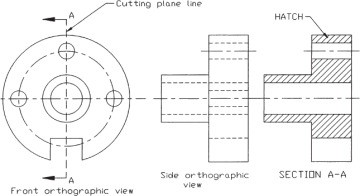
4 5 Section Views Orthographic Views Peachpit
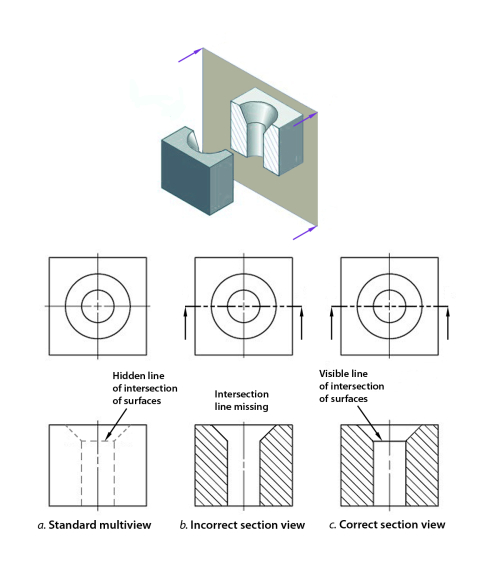
Sectioning Technique Engineering Design Mcgill University

Engineering Drawing Views Basics Explained Fractory
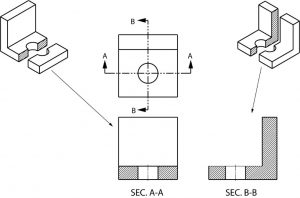
Sectional Views Basic Blueprint Reading
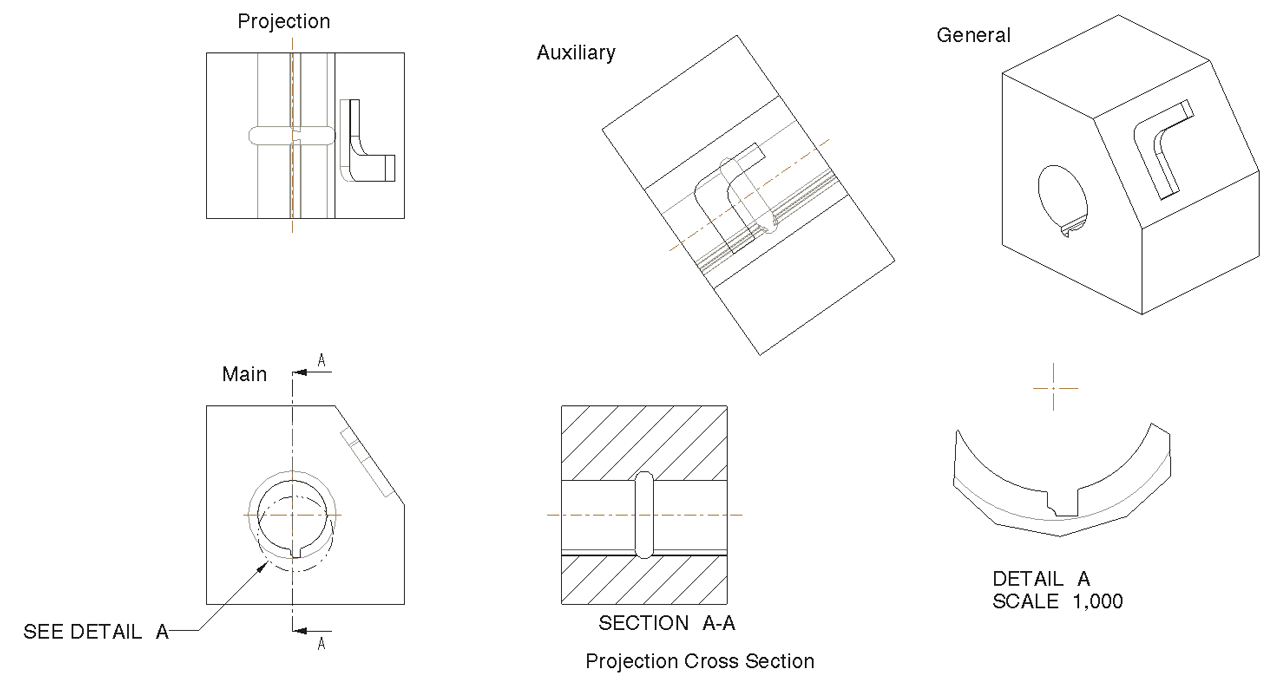

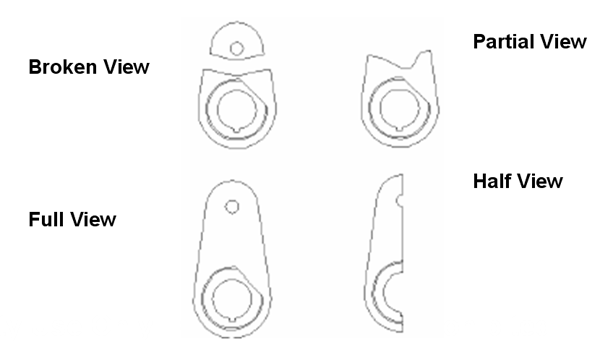
0 comments
Post a Comment